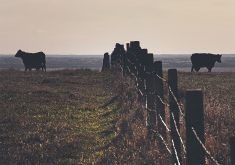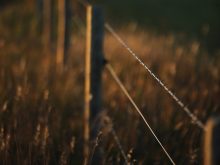I’m assuming that most Western Producer readers have heard about the 100 Mile Diet.
I’m also assuming that most readers don’t actually practise the 100 Mile Diet.
Making an effort to eat more locally produced food is admirable, something that my wife and I try to do ourselves.
We buy much of our meat from a butcher shop supplied by nearby producers, and we purchase many of our vegetables from farmers markets, particularly in the summer time.
But there’s a limit to how far we are willing to go with this.
Read Also

Kochia has become a significant problem for Prairie farmers
As you travel through southern Saskatchewan and Alberta, particularly in areas challenged by dry growing conditions, the magnitude of the kochia problem is easy to see.
Strict adherence to a 100 Mile Diet, in which I consume only food produced within 100 miles of my home, would mean giving up my lunch-time banana, for example. Talk about a deal breaker.
There’s also the enormous implications for Canada’s export-dependent agricultural sector if everyone in the world was some day able to practise such a diet themselves.
However, I can’t imagine that too many people take such a diet literally. It’s meant more as an encouragement to shop local whenever possible, not to actually give up coffee, lobsters and coconuts.
While the consumption of local food receives most of the attention, the concept has been leaking into other parts of society as well.
Earlier this fall I read a story in the Globe and Mail about the 100 Mile Blazer.
I got the impression that the jacket was part of a publicity project for a Toronto fashion company and Campaign for Wool, an international initiative started by Prince Charles to raise awareness of the natural fibre.
However, it’s still an intriguing idea.
The blazer, which costs $750, is made with wool that is produced and processed within 100 miles of the company’s Toronto studio.
Nothing was said about whether the jacket can only be worn within a 100 mile radius of the farm where the sheep live, but I’m guessing not.
Of course, the 100 Mile Blazer opens the door for all sorts of other possibilities.
How about reading only books that were written within 100 miles of your favourite chair, or listening only to music recorded within a 100 mile radius of your stereo?
Of course, taking this too far could cause complications for The Western Producer. What would all of our readers feel about moving within 100 miles of our home office in Saskatoon?
I didn’t think so.

















